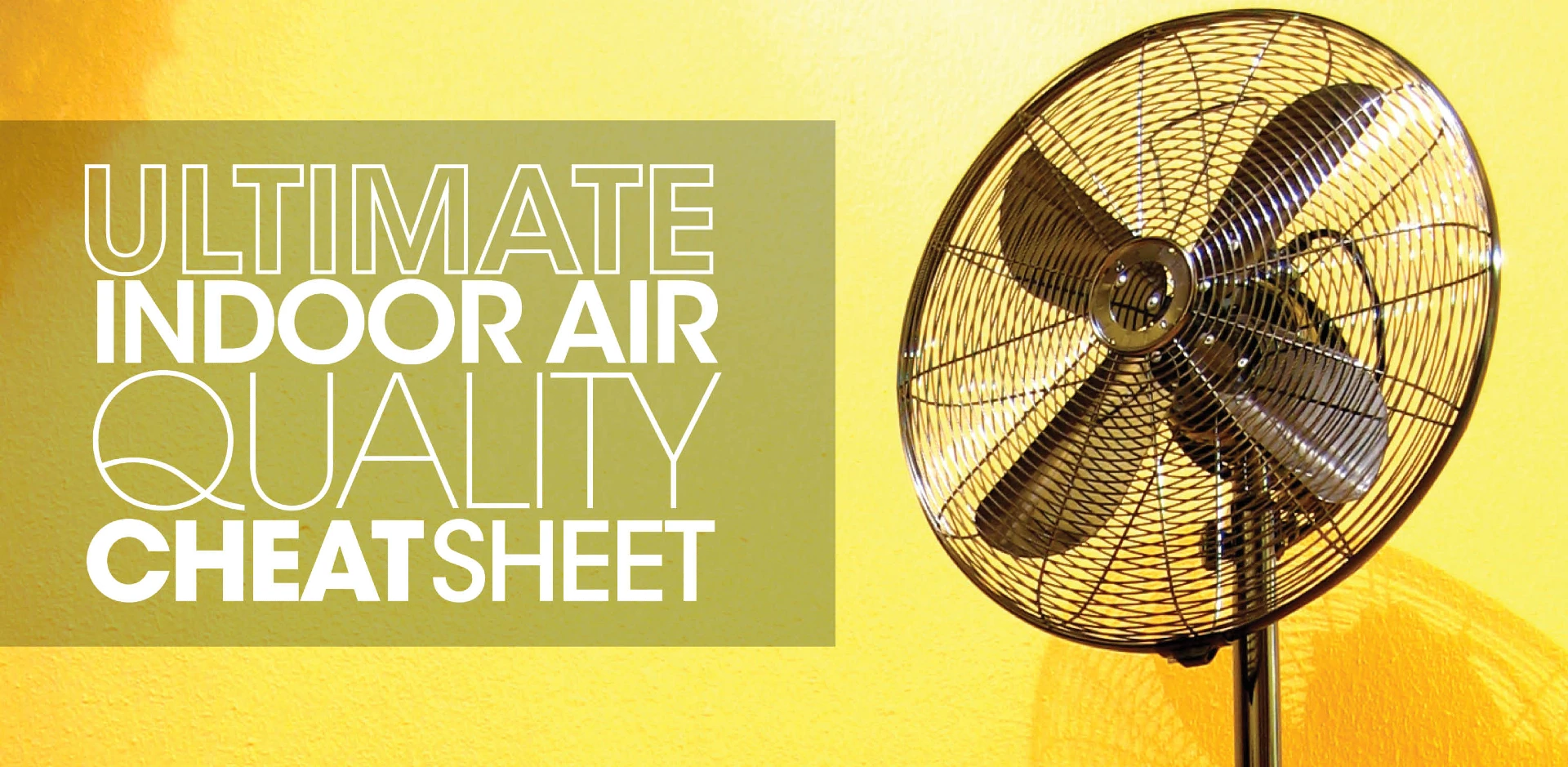Ultimate Indoor Air Quality Cheat Sheet

Think about where you spend most of your time in an average week. How much of your day are you indoors, and how often are you outside? If you’re like most Americans, you spend at least 90 percent of your time inside. The Environmental Protection Agency (EPA) has pointed out that indoor air is often two to five times more polluted than outdoor air, making indoor air quality an important daily consideration. Here’s the ultimate cheat sheet on air quality to help you breathe easier at home every day.
Choose an Air Filter
While the primary function of an HVAC air filter is to prevent dust from settling on the equipment, an added benefit is cleaner indoor air – provided you have installed a filter with a high enough efficiency rating. When you shop for air filter replacement, look for the Minimum Efficiency Reporting Value (MERV). This tells you how efficient the filter is on a scale from 1 to 16. To maintain a balance between airflow and efficiency, opt for a MERV 5 to 8 filter. Unless you have severe asthma or allergies, this is plenty efficient for your needs.
Run an Air Cleaner
A small portable air cleaner is perfect for your bedroom at night while you sleep. This device collects airborne dust and debris, leaving the air cleaner than ever. If you opt for a whole-house model, it replaces the air filter. This type of installation is known to decrease asthma and allergy symptoms.
Change the Filter Regularly
Changing the HVAC filter is one of the easiest ways to help improve indoor air quality. Stock up on a few at a time, that way you can easily replace the filter when the time comes. Plan to check the filter monthly and change it after no more than three months to keep airflow and efficiency at their peak.
Dust and Vacuum Often
It’s easy to put off dusting and vacuuming, but removing dust means you get rid of one of your home’s most prevalent pollutants. Dust with a wet rag or electrostatic cloth instead of a feather duster to trap debris instead of spreading it around. When you vacuum, turn the thermostat setting to ON so the fan blows continuously, drawing up dusty air and filtering it before sending it back into the air you breathe.
Avoid Chemicals
Everything from cleaning products to air fresheners to personal care items give off harmful vapors that become trapped in your home. Avoid chemically laden products and choose non-toxic, non-aerosol, unscented products instead to promote good indoor air quality.
Make Your Pet a Priority
If you want to avoid putting your furry friend up for adoption, make it priority to brush and bathe your pet regularly. Wash his bedding frequently and make your bedroom a no-go zone for Fido. These efforts should reduce the amount of dander floating around the air and nestling in the upholstery, especially bedding.
Increase Ventilation
Aside from keeping your windows open all the time, whole-house ventilation is the best way to replace stuffy, stale indoor air with fresh, clean outdoor air. If you’re not ready to take that step, utilize existing spot ventilation around your home. For example, run the bathroom exhaust fan when you shower and clean; flip on the kitchen range vent when you cook and clean; and turn on the laundry room exhaust vent when clothes are drying. These habits help you eliminate pollutants at the source. With our ultimate indoor air quality cheat sheet, you’ll be breathing easier in no time. To learn more, please contact Aire Serv® today.
 Click to call
Click to call


